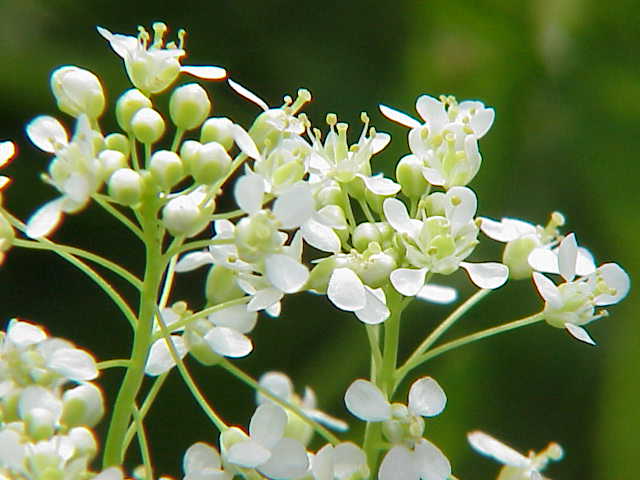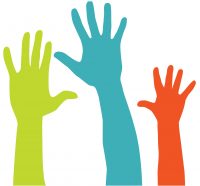Hoary cress (Cardaria draba)
Q – What are invasive species and why are they a problem?
A – The introduction of invasive species (plants or animals not native to the local environment) can have a dramatic effect on our natural resources, human health, and economy. When non-native species are introduced into an ecosystem in which they did not evolve their populations sometimes explode in numbers. The reason for this is that in a natural or native community, species evolve together into an ecosystem with many checks and balances that limit the population growth of any one species. These checks and balances include such things as: predators, herbivores, diseases, parasites, other organisms competing for the same resources and limiting environmental factors. These checks and balances form the complex web of life that makes up an ecosystem and in which a native species competes for survival. However, when an organism is introduced into an ecosystem in which it did not evolve naturally, it no longer has those limits and its numbers can sometimes dramatically increase.
Invasive species are harmful to our natural resources (fish, wildlife, plants and overall ecosystem health) because they disrupt natural communities and ecological processes. This causes harm to the native species in that ecosystem because they are suddenly competing with a new species for the same resources (food, water, shelter, etc.). The invasive species can outcompete the native species for food and habitats and sometimes even cause their extinction. Even if the native species are not completely eliminated, the ecosystem often becomes much less diverse. A less diverse ecosystem is more susceptible to further disturbances such as diseases and natural disasters.
Q – What is a noxious weed?
A – “Noxious weed” is a legal term used at the federal, state, and county level to identify and list plants that pose a significant threat to agriculture, the environment, recreation, and public health.
Learn More:


